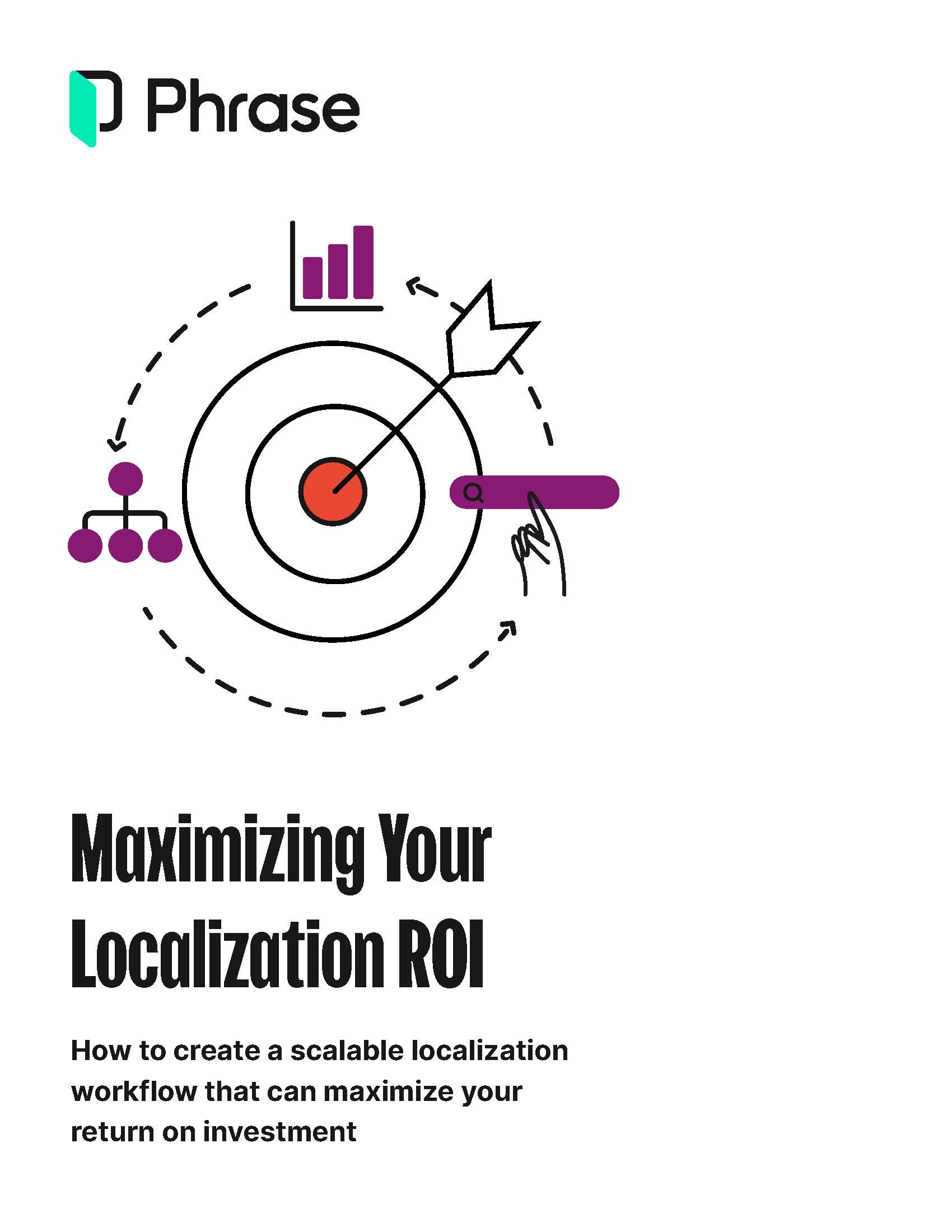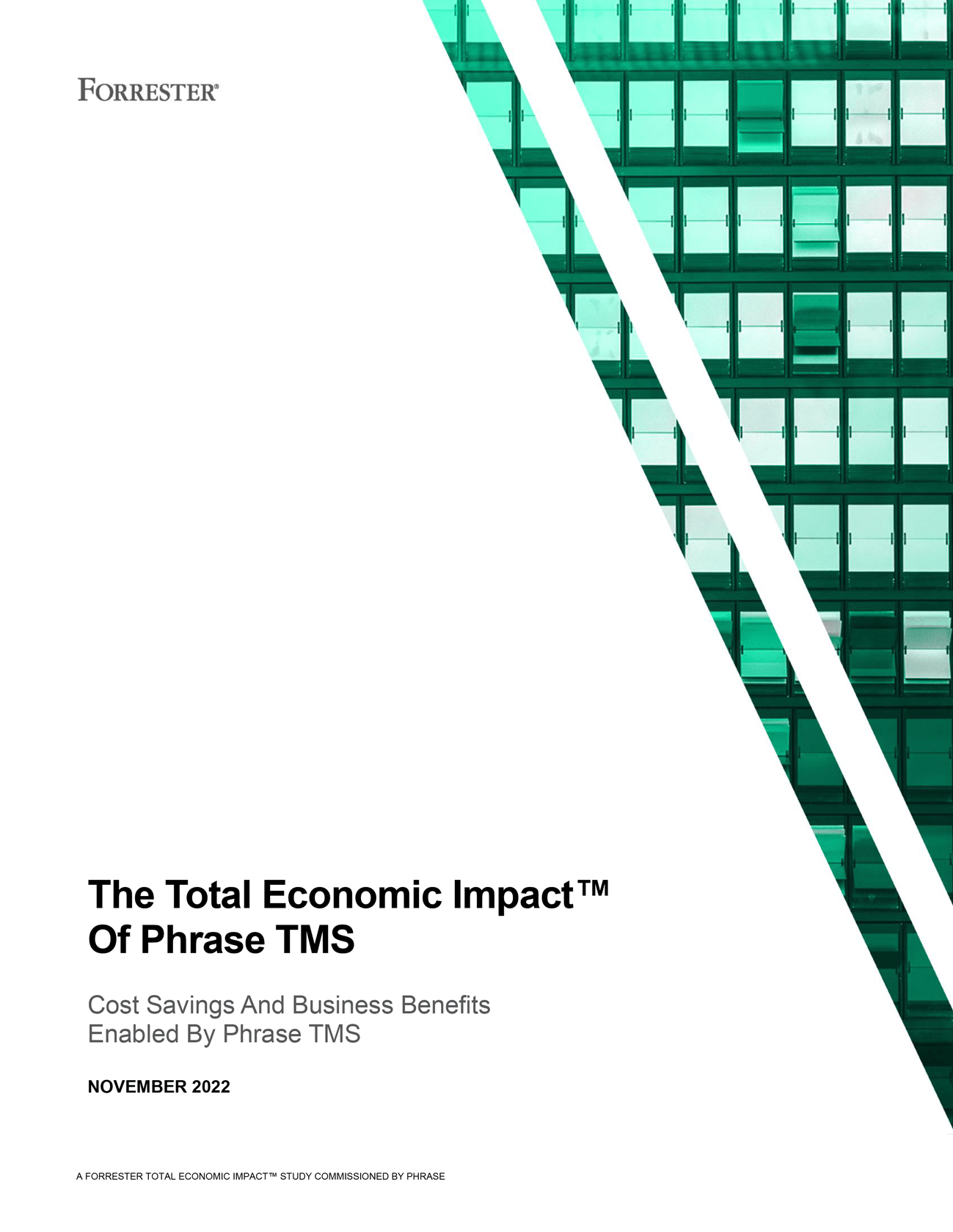Localization strategy
Get Your Money Back: Optimizing Your Localization ROI

For businesses considering launching a product or website into new markets and languages, localization can be a game-changer. Still, ensuring it’s a profitable investment from the start is far from a straightforward task.
In this guide, we delve into the concept of localization ROI: From making strategic market choices to estimating sales revenue and cost management, we explore the key steps to help you secure a positive ROI for your localization program.
What is localization ROI?
If you’re going to spend time and effort in readying your app or website for new markets and languages, you want to be sure it’s all for a good reason. Likewise, if you pay external translation agencies to turn your text strings into Spanish, you want to see your money coming back with friends attached.
If the concept of a localization ROI is new to you, here’s a simple definition:
Return on investment is the comparison between the net amount of money you get out of a project (your return) and the money you put into it (your investment).
ROI is typically expressed as a percentage. For example, if you’ve invested $50K in translation expenses and ended up with a net profit of $5K, your ROI would be calculated as follows: 100% x $5K / $50K, resulting in 10%.
A bigger, positive ROI is usually better. If your ROI is negative, then you spent more money than you made, which is no way to run a business over the long term.

Dive deeper
Deploy localization as a lever for growth
Learn how to develop and implement a cost-effective localization strategy that ensures a strong return on investment.
What choice do you have?
Most of your potential market or audience across the world doesn’t speak your language (even if that language is English). In fact, the dominance of English as an internet language has been stagnating at about 26%. A global study by CSA Research also confirms that internet users around the world prefer to make buying decisions in their own language:
- 40% won’t buy in another language.
- 73% want product reviews in their mother tongue.
- 65% prefer content in their language.
These figures make it obvious that localization may not be a choice but a necessity. However, ROI considerations may push you towards a certain priority for your localization program.
Naturally, it makes sense to serve bigger, more profitable markets for your app or website first. Either way, to make sure your efforts actually bear fruit and you hit your ROI goals, it will be essential for your business to implement the right localization strategy.
Dive deeper
Build the right localization strategy for your business
Learn how to devise a localization strategy for your business with the right goals, metrics, and workflows to drive global growth effectively.
Making your sales estimates
Whether Japanese, Georgian, or Javanese should be your first choice for localization depends on your app or website and your marketing goals.
Your first step in calculating the return on investment in localization is to decide where you want to sell—which may be a totally different country or region, compared to somebody else’s choice.
Next, you must estimate the sales revenue from the markets that you’re planning localization for. This can be a tricky proposition at the best of times, but information to help you do that may include:
- Population size/number of web or mobile device users in the market for localization.
- Comparison of a market you’re aiming at with a market you already know. For example, if the new market has twice the number of smartphone users as your home market, a correctly localized version of your app might attract twice as many customers compared to your home market.
- Data from online tools like Google Trends to see how popular relevant keywords are in different languages. You may want to check out different versions of such tools for different regions, where Google isn’t the main player (as in China, for instance.)
- Specific market or country regulations concerning apps or websites. In sectors like healthcare and finance, you may find that regulations effectively prevent you from launching a localized version of your app. In that case, cross that country off your list and look for others instead.
How a SWOT analysis can help
SWOT is a marketing and business term that stands for strengths, weaknesses, opportunities, and threats. Checking out these four aspects can help you decide if a particular localization effort is likely to be worth it or not. For example, let’s say you are considering the localization into Spanish of your app that helps users learn how to play drums. Your SWOT analysis might look like this:
- Strengths: Your app localization will cover all the content that Spanish people want to know about, including Latin rhythms and techniques of specific interest to them.
- Weaknesses: You don’t have a native Spanish speaker in your team to ensure that your localization will be up to the standards expected by native speakers—although good translation management with a competent, professional translation agency may let you overcome such a weakness.
- Opportunities: The Spanish-speaking market has been vocal about needing better tools for learning how to drum (and your marketing department has statistics, press clippings, etc. to prove it, right?).
- Threats: You have a couple of competitors with decent apps of their own, who have also announced plans to move into the Spanish-speaking market. You’ll need to check your pricing remains attractive to your target customers compared to that of your rivals.
On a relative basis (compared with other projects you know about) or in absolute terms (when you can quantify impacts and dollars), your SWOT analysis can help you decide if you will make money—and how much.
Timing trade-offs for localization investments
Accepted wisdom says that any necessary investment should be made as close as possible to the launch of a product and that all possible revenues should be collected as soon as possible after launch.
That way, you avoid tying up the investment too early and having to wait for returns, whose value will be eroded by inflation over the time you have to wait for them. However, there are other factors that you should consider too:
- Internationalization, the process of preparing your app or website for adaptation to local markets, is best considered from the very start. Just like security and quality, it is often more difficult to add in or layer on internationalization at a later stage, and the results may not be as good, either.
- The basics of internationalization, such as the separation of content and the use of functions to automatically format units and quantities for foreign languages, may also need relatively little effort when they are done at the same time as the development of the code.
- Localization itself, meaning the adaptation of text and other content to a target market, can then be done shortly before the planned launch date of a version of your app or website in a given language. So, if you are planning a launch of a Spanish-localized version of your app in April, you might wait until February before spending time and money on getting translations done and running quality checks, thus keeping this part of the investment closer to the launch date.
Cost management for localization ROI
Return on investment basically depends on 2 things. The first is making more sales revenue and profit. The second is properly managing your localization costs.
That’s why your next goal is to run a tight ship for each localization project. This means monitoring time, expense, and progression towards deadlines to ensure that localization projects are kept on track towards goals and that costs are contained.
You can also plan cost reduction actions to help boost your ROI even further. This doesn’t mean omitting essential tasks or deliverables or trying to grind partners into the ground for the lowest possible prices. Doing this will make quality suffer and could cause your localization to flop in the market.
Translation cost reductions
Some cost reductions make sense all around, especially in terms of cost-efficiency in translation. Here are a few steps you can take to reduce translation costs:
- Localize only those parts of content that can’t be matched by existing locales. For example, the 2 locales of US English (
en-US) and UK English (en-GB) overlap to a certain extent—if you already have a fullen-USversion, it may make more sense to only localize theen-GBparts that are critically different and have theen-GBlocale default back to theen-USlocale for all the parts that are identical. - Use translation memory. Cloud-based localization technology, such as a translation management system, offers capabilities to hold previously translated strings and to prompt translators to use them again. This avoids extra effort and cost and also helps produce a more consistent translation each time (also important for maintenance and upgrade releases.)
- Use term bases. Some terms may not need to be translated or else their translation will always be the same. By preparing a translation glossary of such terms, you can reduce effort and cost. In the right format, these glossaries can also be included in translation management platforms, making it easy for translators to click “OK” and move directly to the next phrase to be translated.
The final step to a positive ROI: Merchandizing to make sales
After you’ve made sure marketing and development are firing on all 6 cylinders to help generate a positive ROI, you will need to make sure that your merchandising is up to the job as well.
Put it this way: If customers don’t know that a localized version of your app exists for them, they won’t think of buying it. So, as a marketing expert once said, don’t release your product to an unsuspecting market. Your advertising, PR, and other suitable forms of content should be the wake-up call your market needs to sit up, pay attention, and start thinking about all the things they’ll be able to do as owners of your localized app.
All of this can ensure that your localization ROI stays positive: You’ll have an extra budget to develop new blockbuster software or further improve your website—complete with delightful localized versions.

Dive deeper
How the Phrase Localization Platform can impact an enterprise’s bottom line
Workflow improvement, increased scalability that enables growth, and a 527% ROI: Learn more about the financial impact of using Phrase—with this Forrester Consulting study.






